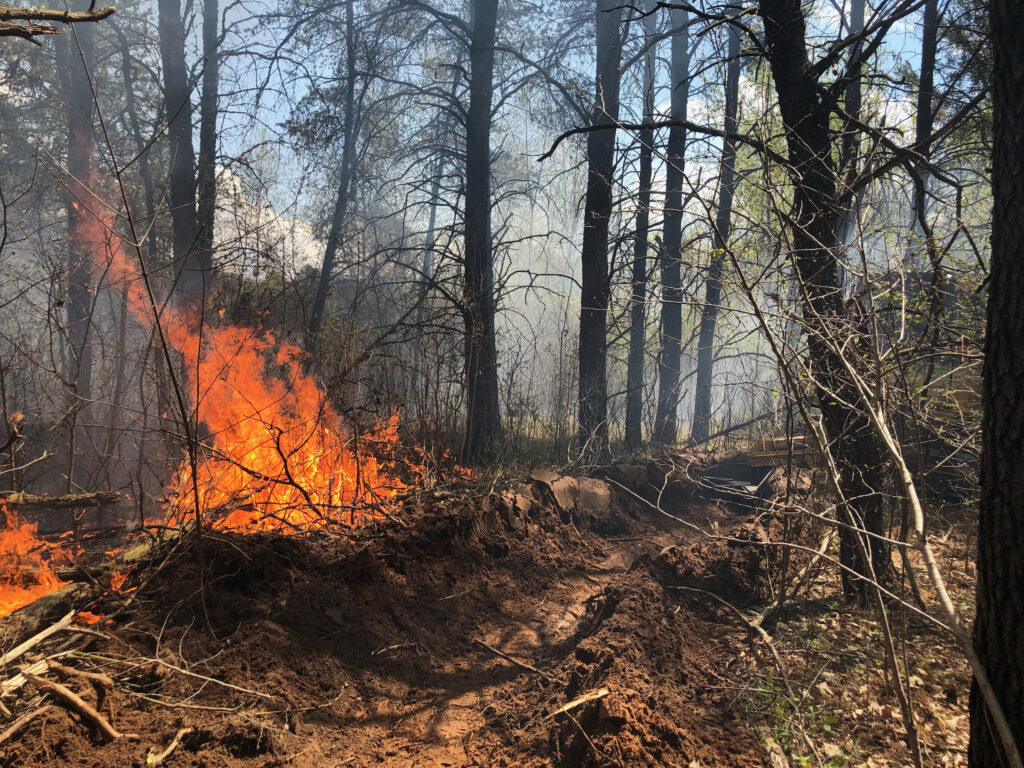Courtesy of the Wisconsin Department of Natural Resources
WISCONSIN – While spring is always much-welcomed after Wisconsin winters, the seasonal warm and dry conditions can increase wildfire activity.
The Tomahawk, Merrill, Wausau, Medford, Rhinelander and Antigo Wisconsin Department of Natural Resources (DNR) offices are gearing up for spring wildfire season and are reminding the public to get burning permits now.
“Weather is the single most important factor influencing how fires start and spread,” said Zach Hylinski, DNR forest ranger at the Merrill Ranger Station. “Temperature, wind, humidity and precipitation are the key weather components that determine the daily fire danger.”
Lack of snow cover and accumulated rain statewide are causing an early start to Wisconsin’s wildfire season.
Debris burning is the number one cause of Wisconsin’s wildfires, and Hylinski says fires caused by careless burning become more frequent this time of year.
“Many people are eager to get outside to clean up their properties by raking leaf litter, brush and pine needles so it looks good and is ready for new growth, and then they choose to burn their debris pile,” Hylinski stated.

Fire is still possible with rain
Rain events this time of year can cause the public to become more complacent and think conditions are safe. However, Hylinski says light fuels, such as leaves, grasses and pine needles in sandy soils, can dry out quickly and turn into hazardous conditions in a matter of a day.
Fire control officials stress the importance of knowing local fire danger. Throughout the spring, the DNR monitors weather and fuel conditions daily. Reported conditions influence fire danger, most often communicated on Smokey Bear fire danger signs. Fire danger signs levels range from low to extreme.
“The signs describe the potential for a fire to start and spread and the intensity at which a fire will burn in the wildland,” Hylinski said. “Our hope is that the public will take note of these signs, check our website or hotline, adapt their behavior and act responsibly.”
Hylinski added that penalties exist for anyone found responsible for causing a wildland fire.
“You could be liable for the costs to suppress that fire and potentially any damages,” he noted. “Getting your permit and checking those daily fire restrictions is much cheaper and safer.”
Hylinski also suggests composting or hauling your yard waste to a transfer site. Burning debris should always be the last alternative.
As soon as snow cover is gone, burning permits are required in DNR Protection Areas. Permit holders are authorized to burn vegetative materials such as leaves, brush and pine needles, and the permits are designed to ensure burn safety with minimal wildfire risk.
Check conditions before burning
Getting a burn permit is fast, easy and free.
“For the average customer, it takes less than two minutes to apply online,” Hylinski said. “It’s good for the calendar year, and we can even email or mail it right away. With a little planning and dedication to getting your burn permit and following the rules, we can all work together to prevent wildfires.”
You can get your annual DNR burning permit online (www.dnr.wisconsin.gov/topic/forestfire/permits) or by calling 1-888-WIS-BURN (947-2876) to have it mailed or instantly emailed. You also can visit a local DNR office or designated emergency fire warden.
Residents with permits must call or visit the WisBurn webpage (www.apps.dnr.wi.gov/wisburn/#/) after 9 a.m. on the day of the planned burn to check daily fire restrictions, including legal burning hours, size limitations and burn suspensions.
The DNR does not regulate some areas of the state, so it’s important to check with local municipal or fire department officials for any ordinances or other burning restrictions.
For more information on burning permits, fire danger and preparing for wildfires around your home and property, visit the DNR’s Fire Management webpage at www.dnr.wisconsin.gov/topic/ForestFire.
